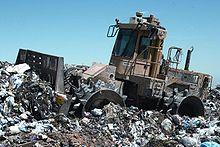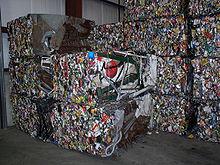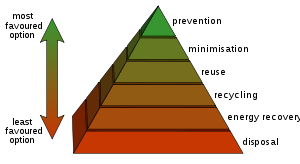LEGAL RESPONSIBLE >> OWNERSHIP HAZMAT PRODUCT/PUBLIC LIABILITY H&S REGULATION WASTE MANAGEMENT M.S.D.S
Waste Management is a set of activities that include the following;
- Collection, transport, treatment and disposal of waste.
- Control, monitoring and Regulation of the production, collection, transport, treatment and disposal of waste.
- Prevention of waste production through Reduce, Reuse and Recycling (RRR).
Issues relating to waste management include;
- Generation of waste.
- Waste reduction.
- Waste removal.
- Waste transportation.
- Waste treatment.
- Recycling and reuse.
- Storage, collection, transport, and transfer.
- Treatment.
- Landfill / Disposal.
- Environmental considerations.
- Financial and marketing aspects.
- Policy / Regulation.
- Education and training.
- Planning and implementation.
Landfill:
 Waste ManagementDisposal of waste in a landfill involves burying the waste and this remains a common practice in most countries. Landfills were often established in abandoned or unused quarries, mines or pits. A properly designed and well-managed landfill can be a hygienic and relatively inexpensive method of disposing of waste materials. Older, poorly designed or poorly managed landfills and open dumps can create a number of adverse environmental impacts such as wind-blown litter, attraction of vermin, and generation of liquid.
Waste ManagementDisposal of waste in a landfill involves burying the waste and this remains a common practice in most countries. Landfills were often established in abandoned or unused quarries, mines or pits. A properly designed and well-managed landfill can be a hygienic and relatively inexpensive method of disposing of waste materials. Older, poorly designed or poorly managed landfills and open dumps can create a number of adverse environmental impacts such as wind-blown litter, attraction of vermin, and generation of liquid.
Another common product of landfills is gas (mostly composed of METHANE and CARBON DIOXIDE, which is produced from anaerobic breakdown of organic waste. This gas can create odour problems, kill surface vegetation and is a GREENHOUSE GAS.
Design characteristics of a modern landfill include methods to contain leachate such as clay or plastic lining material. Deposited waste is normally compacted to increase its density and stability and covered to prevent attracting vermin (such as mice or rats). Many landfills also have landfill gas extraction systems installed to extract the landfill gas.
Incineration:
 Incineration is a disposal method in which solid organic wastes are subjected to combustion so as to convert them into residue and gaseous products. This method is useful for disposal of residue of both solid waste management and solid residue from waste water management. This process reduces the volumes of solid waste to 20 to 30 percent of the original volume. Incineration and other high temperature waste treatment systems are sometimes described as “Thermal Treatment”.
Incineration is a disposal method in which solid organic wastes are subjected to combustion so as to convert them into residue and gaseous products. This method is useful for disposal of residue of both solid waste management and solid residue from waste water management. This process reduces the volumes of solid waste to 20 to 30 percent of the original volume. Incineration and other high temperature waste treatment systems are sometimes described as “Thermal Treatment”.
Incinerators convert waste materials into Heat, Gas, Steam and Ash.
Incineration is carried out both on a small scale by individuals and on a large scale by industry. It is used to dispose of solid, liquid and gaseous waste. It is recognized as a practical method of disposing of certain Hazardous Waste (Hazmat).
Incineration is a controversial method of waste disposal, due to issues such as emission of gaseous pollutants.
Recycling:
 Recycling is a resource recovery practice that refers to the collection and reuse of waste materials. The materials from which the items are made can be reprocessed into new products. Material for recycling may be collected separately from general waste using dedicated bins and separate collection vehicles. The owner of the waste is required to separate the materials into various different bins (e.g. for paper, plastics, metals) prior to its collection.
Recycling is a resource recovery practice that refers to the collection and reuse of waste materials. The materials from which the items are made can be reprocessed into new products. Material for recycling may be collected separately from general waste using dedicated bins and separate collection vehicles. The owner of the waste is required to separate the materials into various different bins (e.g. for paper, plastics, metals) prior to its collection.
Steel crushed and baled for recycling.
The most common automotive products recycled include Aluminium– WEEE, Copper – wire harnesses, Steel – body panels, engine blocks and equipment, Polyethylene and PP plastics – bumpers and interior fittings, IP Panels etc, Glass – windows, Cardboard / Paper – parts packaging, filters etc, Magazines / Paper – point of sale material (POS), Oils / Fluids – engine etc, Rubber – tyres, Hazmat – AC gas, Batteries – wet & dry cell, Foam – seats.
Sustainability:
The management of waste is a key component in a business’ ability to maintaining ISO 14001 accreditation. Companies are encouraged to improve their environmental efficiencies each year by eliminating waste through resource recovery practices, which are sustainability-related activities.
Waste Handling and Transport:
International Waste Movement:
While waste transport within a given country falls under National Regulations, trans-boundary movement of waste is often subject to International Treaties. A major concern for many countries in the world has been hazardous waste. The Basel Convention, ratified by 172 countries, deprecates movement of hazardous waste from developed to less developed countries. The provisions of the Basel convention have been integrated into the EU Waste Shipment Regulation.
Benefits of Waste Management:
Waste is not something that should be discarded or disposed of with no regard for future use. It can be a valuable resource if addressed correctly, through policy and practice. With rational and consistent waste management practices there is an opportunity to reap a range of benefits. Those benefits include:
- Economic: Improving economic efficiency through the means of resource use, treatment and disposal and creating markets for recycles can lead to efficient practices in the production and consumption of products and materials resulting in valuable materials being recovered for reuse and the potential for new jobs and new business opportunities.
- Social :By reducing adverse impacts on health by proper waste management practices, the resulting consequences are more appealing settlements. Better social advantages can lead to new sources of employment and potentially lifting communities out of poverty especially in some of the developing poorer countries and cities.
- Environmental: Reducing or eliminating adverse impacts on the environmental through reducing, reusing and recycling, and minimizing resource extraction can provide improved air and water quality and help in the reduction of greenhouse emissions.
- Inter-generational Equity: Following effective waste management practices can provide subsequent generations a more robust economy, a fairer and more inclusive society and a cleaner environment.
Central Principles of Waste Management:

There are a number of concepts of waste management which vary in their usage between countries or regions. Some of the most general, widely used concepts include:
1. Waste Hierarchy :The waste hierarchy refers to the “3 Rs” Reduce, Reuse and Recycle, which classify waste management strategies according to their desirability in terms of waste minimization. The waste hierarchy remains the cornerstone of most waste minimization strategies. The aim of the waste hierarchy is to extract the maximum practical benefits from products and to generate the minimum amount of waste. The waste hierarchy is represented as a pyramid because the basic premise is for policy to take action first and prevent the generation of waste. The next step or preferred action is to reduce the generation of waste i.e. by re-use.
Following this step is material recovery and waste –to-energy. Energy can be recovered from processes i.e. landfill and combustion, at this level of the hierarchy.
The final action is disposal, in landfills or through incineration without energy recovery. This last step is the final resort for waste which has not been prevented, diverted or recovered.
2. Life-Cycle of a Product: The life-cycle begins with design, then proceeds through manufacture, distribution, use and then follows through the waste hierarchy’s stages of reuse, recovery, recycling and disposal. Each of the above stages of the life-cycle offers opportunities for policy intervention, to rethink the need for the product, to redesign to minimize waste potential, to extend its use. The key behind the life-cycle of a product is to optimize the use of the world’s limited resources by avoiding the unnecessary generation of waste.
3. Resource Efficiency: The current, global, economic growth and development cannot be sustained with the current production and consumption patterns. Globally, we are extracting more resources to produce goods than the planet can replenish. Resource efficiency is the reduction of the environmental impact from the production and consumption of these goods, from final raw material extraction to last use and disposal. This process of resource efficiency can address sustainability.
Polluter Pays Principle:
The Polluter Pays Principle is a principle where the polluting party pays for the impact caused to the environment. With respect to waste management, this generally refers to the requirement for a waste generator to pay for appropriate disposal of the unrecoverable material.

